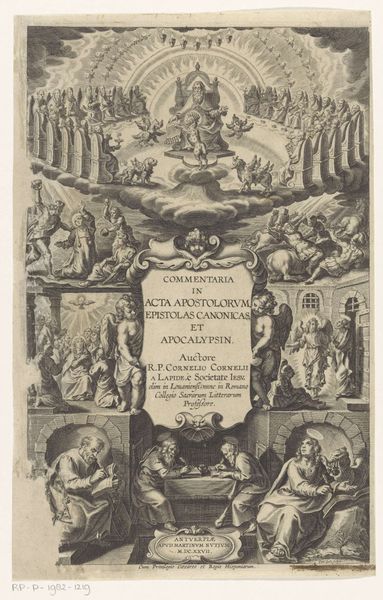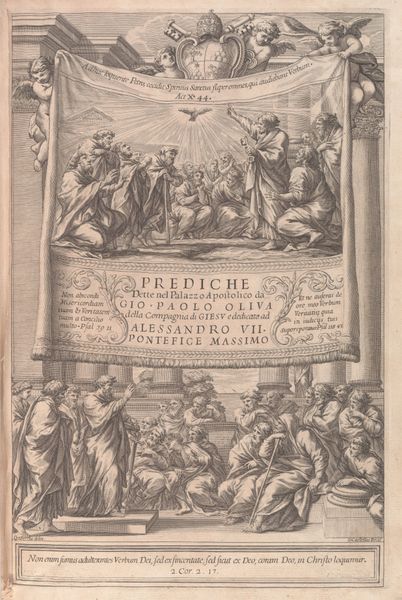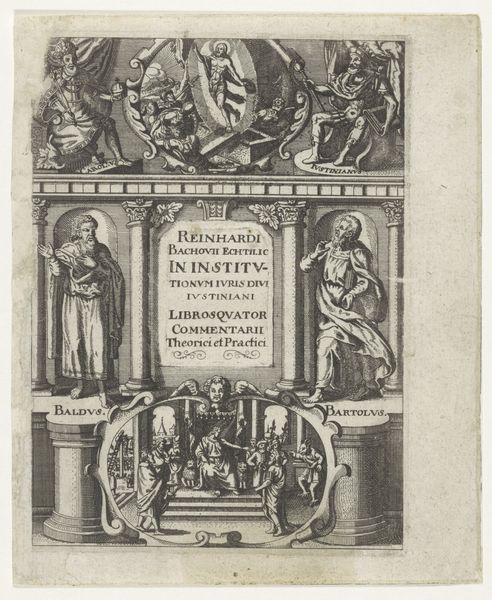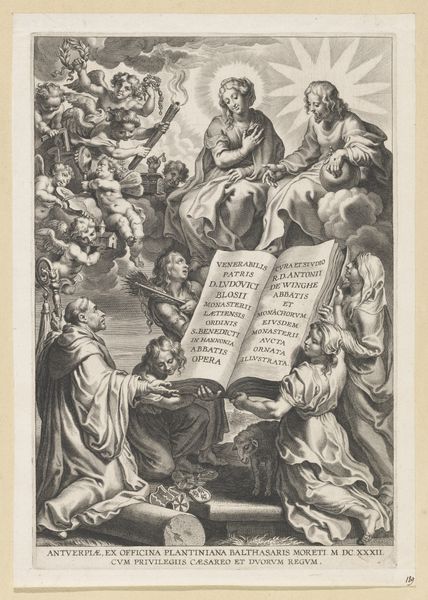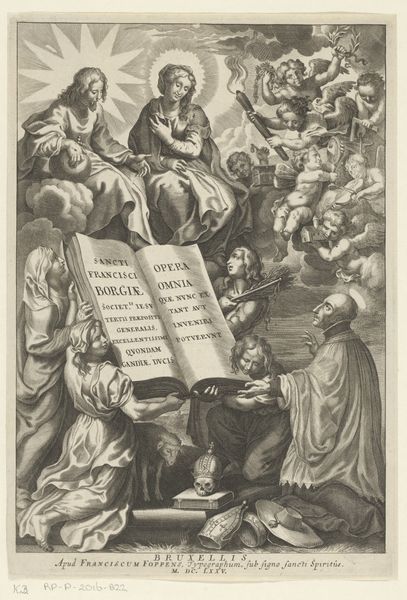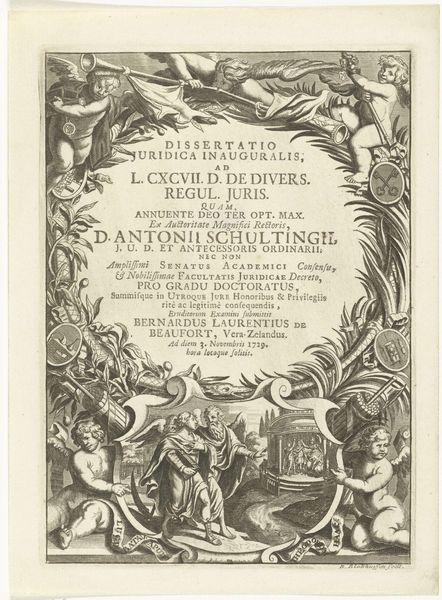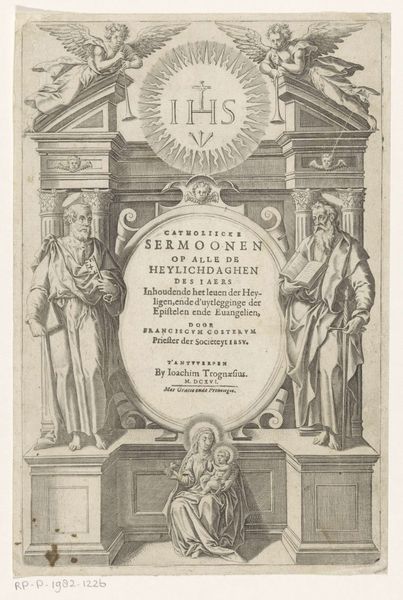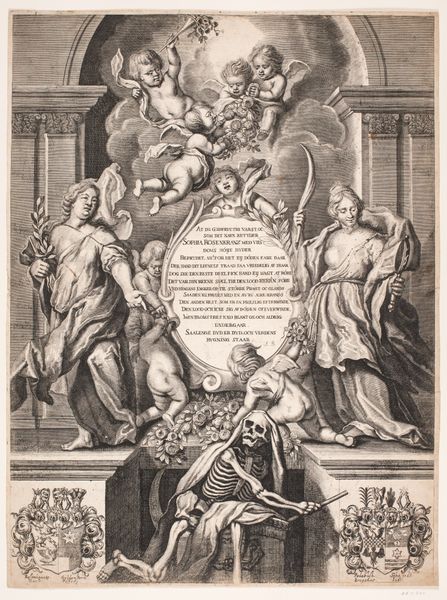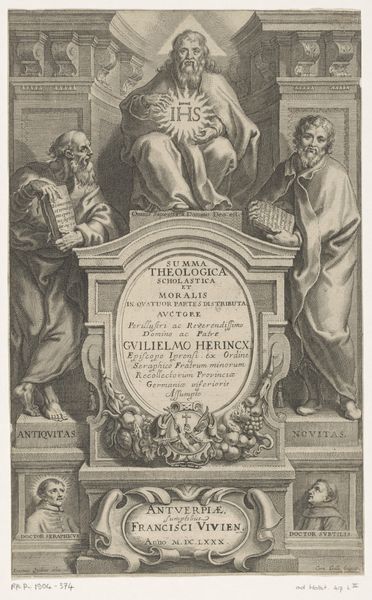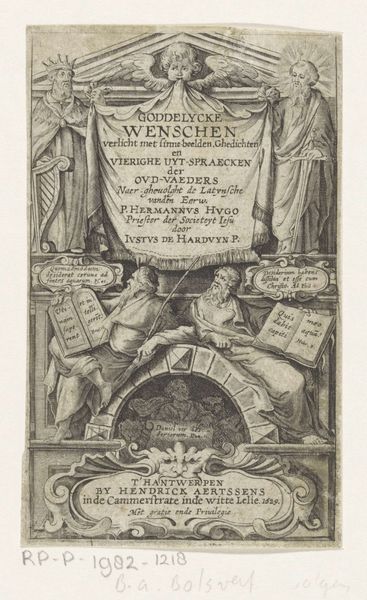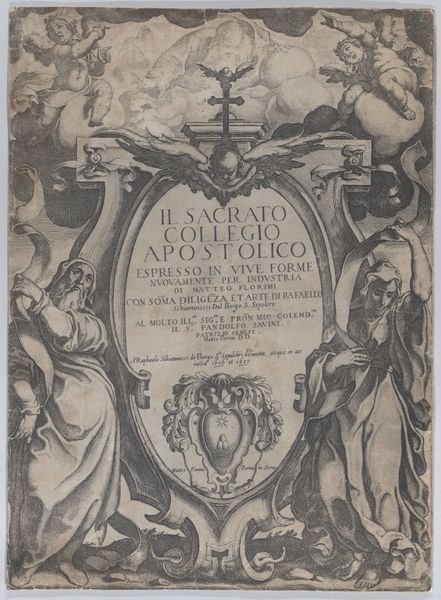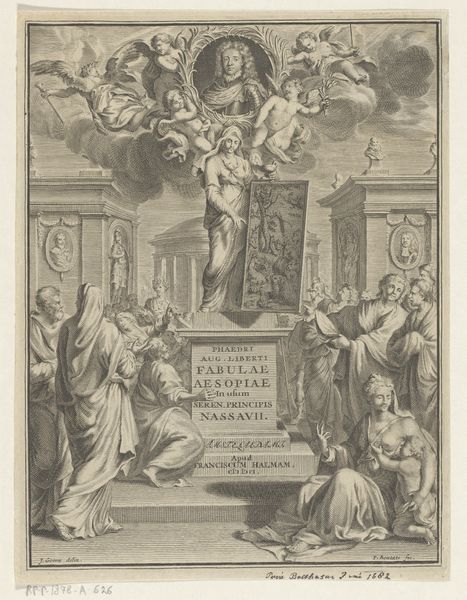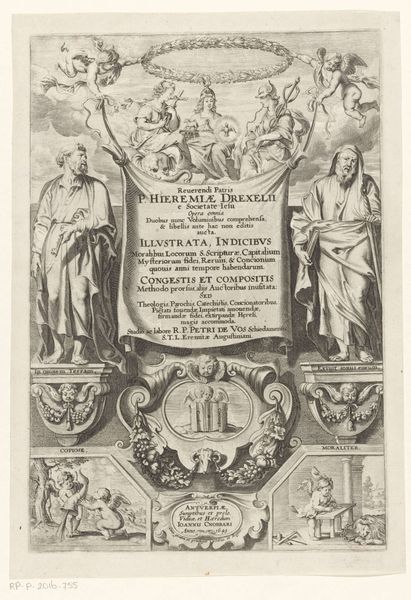
graphic-art, print, engraving
#
graphic-art
#
allegory
#
baroque
# print
#
old engraving style
#
history-painting
#
engraving
Dimensions: height 332 mm, width 200 mm
Copyright: Rijks Museum: Open Domain
Curator: Here we have an engraving from 1630 titled "Allegorische titelpagina met Cisterciënzer heiligen," created by Cornelis Galle I and currently housed at the Rijksmuseum. Editor: It's striking. The stark contrast between light and shadow creates such a dramatic, almost theatrical, atmosphere. It gives the scene a very devotional feel. Curator: Indeed. Galle's allegorical approach here is interesting; he intertwines Cistercian saints with religious iconography. Notice the hierarchy presented. The upper celestial realm contains the Holy Trinity, while below we have earthly figures. Consider the historical context—religious orders held significant power during this period. The image works to visually reinforce their authority. Editor: Yes, but let's examine how that authority is materially constructed. It's an engraving, a print— a medium designed for reproduction, dissemination. This wasn’t a unique object for private devotion; this imagery was intended for a wider audience, shaping public perception of the Cistercian order. The printing press was crucial to their power and image control. Curator: I agree, its reproduction undoubtedly impacted its meaning and audience, but I also find compelling the message it presents to a faithful observer. Think about the political undercurrents and the Council of Trent, shaping the Counter-Reformation; images were important in reasserting the Catholic Church’s doctrine. These engravings played a vital role in propagating this narrative. Editor: Absolutely. The material and social functions of such artwork are intertwined. For example, notice the very specific rendering of clothing textures, all expertly reproduced by the engraver. This draws a material connection between those robes and the implied devotion and piety represented, thereby associating craft and commerce with faith. Curator: A vital connection. By visually showcasing the figures and narratives associated with the Cistercians, Galle reinforces established religious and social frameworks. The image presents not only devotion but also an institutionalised and hierarchical structure. Editor: And by understanding its production and dissemination we realize the artwork isn't merely representing power but actively participating in constructing it. Curator: Precisely. Viewing the art through a critical lens opens layers of meaning that contribute to the narratives these prints carry. Editor: By considering the materiality of this 17th-century engraving, and the socio-historical context, we can hopefully foster a deeper engagement with, and critical understanding of, works on paper.
Comments
No comments
Be the first to comment and join the conversation on the ultimate creative platform.
